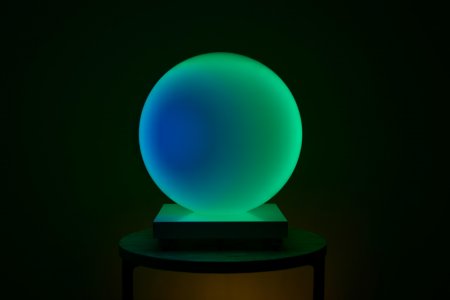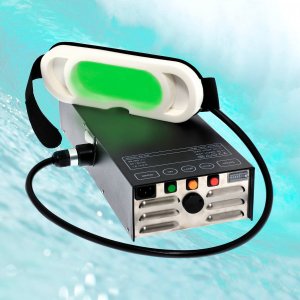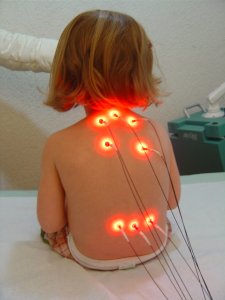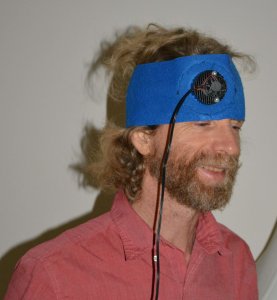Light from the sun is the primary source of energy driving all life on our planet, so it is not surprising that it plays such a powerful role in human health. The use of light for healing is as old as humanity itself, and is documented in ancient Egyptian, Indian and Greek texts. Sunlight was a key medical tool for the ancients, either in its pure form as heliotherapy, or filtered through precious stones or other colored materials. In the West, its role was then obscured for many centuries because Christianity deemed heliotherapy to be a form of sun worship and proscribed it as paganism. Only towards the end of the 19th century did it begin to arouse renewed interest, with numerous heliotherapy centers throughout the world becoming the preferred medical providers for intractable diseases such as tuberculosis. Such was the respect accorded to light medicine during this period that one of the very first Nobel Prizes for Medicine was awarded to Nils Ryberg Finsen in 1903 for his pioneering work in phototherapy. Prize motivation: "in recognition of his contribution to the treatment of diseases, especially lupus vulgaris, with concentrated light radiation, whereby he has opened a new avenue for medical science". This was not to last: with the rise of antibiotics in the 1930s light therapy was again relegated to "medical paganism", this time through the war between orthodox medicine (pharmaceutical) and alternative medicine or therapies. There it remained for the remainder of the 20th century – until two key discoveries initiated the current renaissance in light medicine.
Light for the body: medical applications
The first discovery is that light can directly enhance cell metabolism, through a complex chain of biochemical processes termed photobiomodulation by the main researcher behind its discovery: Tiina Karu. Prof. Karu worked patiently on this field of light therapy throughout the 1980s and 1990s in her Moscow lab – even though she was not taken seriously at the beginning of her research. She identified mitochondria (tiny energy engines within each of our cells) as the main recipients of light stimulation, mostly driven by red and near-infrared (NIR) frequencies. This understanding opened up the whole new field of Low Level Laser Therapy (LLLT), where non-thermal low levels of light are used for various regenerative purposes. Riding on applications research conducted by NASA in the early 2000s, LLLT is now gaining widespread acceptance. The underlying photobiomodulation cellular processes involved are now the focus of intensive worldwide research, and the specific effects of different colors are being explored. For example, blue is used for acne treatment, yellow-orange for skin toning, red for wound healing, infrared for joint relief.
One of the most promising recent developments is transcranial light therapy, where infrared light shining through the cranium (which, surprisingly, transmits up to two to three per cent of its flux) heals brain cells and may alleviate the symptoms of strokes, dementia and depression. In one of the latest experiments, a team in France has been exploring a potential cure for Parkinson’s disease using infrared light piped directly into affected brain regions by a tiny optical fiber.
The second key discovery is that light has a deep impact on our hormonal system through a non-image forming (NIF) optic pathway, entirely distinct from the previously-known visual optic pathway. While such a non-visual pathway had been suspected for decades (Hollwich inferred it in back in 1948), it was only in 2000 that a new type of photoreceptor was positively identified: the iPRGCs (intrinsically photosensitive retinal ganglions cells) which express an ancient photopigment closer to the invertebrate world than the mammalian one, melanopsin, characterised by a blue-centered action spectrum. These iPRGCs are directly linked with the hypothalamus and influence melatonin levels and our circadian rhythm. A resultant therapeutic application is the bright-light treatment used to counter Seasonal Affective Disorder (SAD), so well-established today that it has actually become synonymous with "light therapy" in the public’s mind.
This discovery had profound implications for lighting designers: not only did their lighting schemes imply economic and aesthetic considerations, they now also had a bearing on health. The proportion of blue content in the light applied in our living spaces, as expressed by its color-correlated temperature (CCT), became a key design issue. The general picture originally seemed relatively clear: use high CCT (above 5000°K, more blueish) in the morning and mid-day to encourage wakefulness, use low-CCT (below 3000°K, more yellowish) in the evening to mitigate circadian disruption.
Lighting designers wish it were that simple… Much has been learned about the NIF pathway in the last decade, with hundreds of research papers published on the subject every year, but this has only highlighted its exquisite complexity. While the general lighting recommendation above remains broadly valid, from 2010 on it has been subject to increasingly more caveats. In a recent landmark opinion "Measuring and Using Light in the Melanopsin Age", fourteen leading researchers in the field conclude: "Simple prescriptions are as likely to do as much harm as good, and even experts may have divergent ideas about best practice under some situations".
Here are a few examples of the complexities as they appear today:
- In addition to responding to their own melanopsin pigment, the non-visual iPRGCs also relay stimuli from the visual photoreceptors known as rods and cones. The ensuing circadian sensitivity is now seen as a complex web involving both visual and non-visual cues.
- From the early model, which focused on melatonin suppression centered at 460nm, the circadian sensitivity spectrum is now being described by more sophisticated non-linear models, with an average peak shifting towards 490nm.
- Up to five different types of iPRGCs have now been identified, each with its own action spectrum and dendritic networks.
- Considerably different response speeds for these various iPRGC types, as well as the "traditional" rods and cones, point to complex temporal as well as spatial dynamics within the retinal matrix.
- The neat division between the visual and NIF systems is eroding: iPRGCs are now thought to project beyond the hypothalamus to all major visual regions of the brain, so that their influence also extends to aspects of visual perception.
- The circadian clock may actually be driven more by the intense variations in CCT prevalent at dusk and dawn rather than by the CCT value itself, with far-reaching consequences for human-centric lighting design.
If you feel somewhat confused by this state of affairs, do not despair: you are not alone…
Light hygiene: the LED controversy
The LED revolution is unfolding throughout this ongoing research, leading to numerous controversies surrounding the health implications of LED lighting with various experts weighing in both pro and con.
Some of the main concerns revolve around risks associated with the 440 to 460nm blue peak typical of nearly all white LEDs applied for general lighting, as exposed in numerous papers published over the last 15 years. Specifically, these risks can lead to potential circadian rhythm disruption and result in retinal damage due to oxidative photodegradation (so-called "blue light hazard" centered at 450nm) with possible links to age-related macular degeneration (AMD). There has lately been a strong rebuttal from the LED industry, citing publications such as the "True Colors" 2014 report from the US Department of Energy denoting that the debate should not be about LEDs, but rather about the CCT of lighting sources in general since both the melanopic and the blue light hazard factors of all main lighting sources (incandescent, fluorescent and LED) can be shown to be about equal at any given CCT. Other authoritative reports from the International Energy Agency and the Scientific Committee on Emerging and Newly Identified Health Risks of the EC (SCENIHR) similarly state that these blue-related risk factors are no worse for LEDs than for sunlight, which is obviously safe.
A large part of the lighting community currently appears to have been pacified by these arguments – but by no means the entire community, especially among groups specializing in therapeutic applications of light (such as the International Light Association, to which I belong). One issue that has been raised is the validity of the calculated risk factors, which are obtained by integrating action functions over the visible spectrum; this averaging can yield seemingly equivalent results for wildly unbalanced spectrums and tends to mask punctual effects caused by specific biologically active light frequencies. This is of particular concern in relation to the detrimental influence of "artificial light at night" (ALAN) and light pollution on health.
Another argument relates to the systematic disregard of the essential role played by near-infrared light (NIR) in retinal health. Modern energy-efficient light sources such as fluorescent lamps and LEDs are specifically engineered to reduce or eliminate their NIR output, considered as wasted heat energy. However since Karu’s work it is known that most cellular regeneration driven by photobiomodulation occurs at red and NIR light frequencies, and experiments have shown that even moderate levels of this light can repair damaged retinal cells. In sunlight (as well as in other traditional thermal light sources such as candles and incandescent), blue content is always balanced by substantial red and NIR, leading to a natural equilibrium between oxidative stress and regeneration within the retina – a factor ignored by current blue light hazard factor calculations, which do not factor in NIR. Non-thermal light sources such as LEDs may well have no higher blue content than sunlight, but they also lack its compensating NIR, and so could still potentially contribute to increased long-term retinal degradation.
Yet another light hygiene concern specific to LEDs is the widespread use of pulse-width modulation (PWM) in their driver circuits, commonly leading to highly pulsed light output. It is usually considered that setting the PWM frequency high enough above the flicker-fusion frequency, where our visual system stops perceiving flicker (i.e. 50-90Hz), will render the flicker imperceptible and therefore innocuous. However this “invisible” flicker can lead to migraine, headaches and eye-strain, and generally contributes to environmental stress. Recent research indicates effects at frequencies higher than previously acknowledged, and the latest IEEE recommendations call for PWM frequencies above 3000Hz to “prevent biological effects”. For many specialists used to working with more subtle therapeutic effects of light the healthiest option is to simply eliminate PWM and drive LEDs with DC circuits, which is technically more difficult but perfectly feasible.
Light for mood: psychotherapeutic applications
Every lighting designer makes use of the natural attraction we all feel for pure colors. This process has been refined by light therapists, leading to various methods of tapping into the deep impact of light and colors on our mood, on our autonomous nervous system (ANS) balance, and for those methods more attuned to subtle energy medicine, on meridians and inner energy flows.
While on a much smaller scale than with biochemically-oriented light medicine, clinical research is being conducted on psychophysiological effects of color and light pulsations. These include promising avenues such as audio-visual stimulation, differential influence on brain hemispheres with lateralized light, and my own research on light modulation. They point to light-based psychotherapeutic applications for depression, burnout, posttraumatic stress disorder (PTSD), insomnia, addiction, learning, attention deficit hyperactivity disorder (ADHD), fibromyalgia… where standard medical treatment has limited success. They also confirm the complex interaction between the visual and non-visual optic pathways revealed by other medical research.
Light as information: medicine of the future
Beyond the manifestations of light covered above, more fundamental effects are gradually starting to emerge from research into the ultra-weak intensities range. Early research pioneered by physicist Fritz-Albert Popp has shown that living organisms both emit and absorb very low levels of light quanta, known as biophotons. This field, now generally handled by institutes in the Netherlands and Japan, is yielding provoking indications of the use of living light in the diagnostics sense and as an information vector for influencing health and consciousness. Deciphering such mysteries will truly turn light into the medicine of the future…



